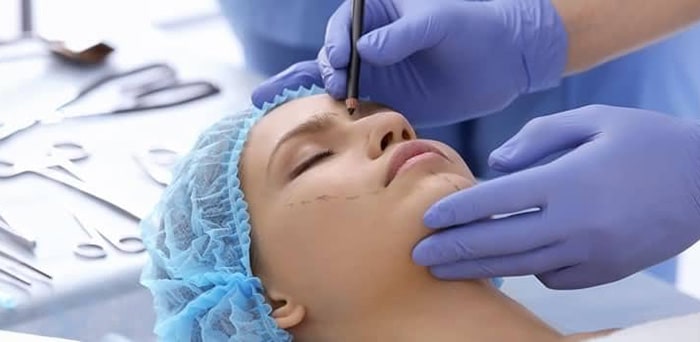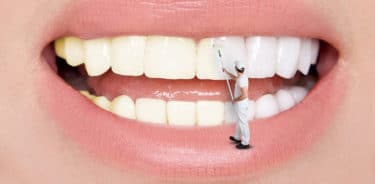Rhinoplasty (nose job), is one of the most performed surgeries to change the shape and size of the nose, or to improve its function. There are many application methods and techniques. Repair of shape disorders, correction of breathing problems and birth defects or aesthetic reasons are main reasons. Commonly arched nose, low nasal tip, asymmetry in the nose, curvature and breathing problems are corrected. Jaw or neck shaping can be done simultaneously with rhinoplasty. All surgeries carry risks such as infection, bleeding, or poor response to anesthesia; however, complications are rare.
Table of Contents
What is rhinoplasty (Nose job)?
Rhinoplasty is a plastic surgery procedure that involves reshaping and improving the function of the nose. It can be done for aesthetic and functional reasons. Aesthetic rhinoplasty changes the appearance of the nose; functional rhinoplasty is to improve the airway of the nose to facilitate breathing.
Rhinoplasty types and Techniques
Nose aesthetics is highly individual. The techniques to be used by the surgeon are customized depending on the patient’s anatomy, age and desired changes.
Open rhinoplasty
The nose is fully accessed, and then given the desired shape by lifting the skin with a small incision through the nose or the bridge between the nostrils (columella). It is suitable for patients requiring extensive remodeling. Problems such as arch formation on the back of the nose, the width or low tip of the nose and and the nose length can be dealt with more appropriately with this method. The traces are hidden in the natural curves of the nose. Puffiness occurs and recovery time is long.
Closed rhinoplasty
Surgery is performed with incisions made through the nostril. It is used in patients who need small adjustments in nose structures. Advantages include no visible signs of scarring, less swelling, less bruising, less pain, shorter recovery time, very little bandage used.
Revision rhinoplasty
If an inexperienced surgeon has performed the first procedure, a second operation may be necessary to correct the problems and meet the patient’s expectations.
Nasal Tip Plasty
Nose tip is reshaped without affecting other nasal structures. Open or close approach is available.
Non-surgical techniques
Injectable therapies can be applied to provide a more pleasant appearance on the nose, providing temporary effects lasting up to a year. A combination of dermal fillers or removal of fat from the patient can be carried out. A specialist plastic surgeon can reshape the nasal tip with the help of a filler that he/she strategically injects at certain points and improves the symmetry of the nose.
Does rhinoplasty work?
Results cannot be guaranteed, there are risks to consider. Rhinoplasty can improve the shape, size and symmetry of the nose, but cannot achieve perfection.
Remember that everyone’s face is asymmetrical to some extent; it is important to have realistic expectations. A qualified plastic surgeon will explain what is possible within the scope of his art and help you to reshape your nose in a way that looks natural.
What problems does rhinoplasty solve?
Rhinoplasty is a whole; figure and function should be considered together and the solutions should be evaluated together.
Aesthetic problems:
- Size, shape, angle and proportions of nose related to face balance
- Deformations caused by injuries
- Birth defects
- Distorted, oblique, extreme trapezoidal, asymmetric nose
- Hump in the nose
- Large, flabby, raised, hooked nasal tips
- Length of the nose
- Wide nostrils
Breathing problems:
Patients who apply for rhinoplasty may also have breathing problems such as snoring and sleep apnea. A number of tests is done to identify the nasal anatomy. Removal of plugs in the deflected septum, one of the causes of respiratory distress, is done, and if there is growth in the flesh called concha, it is reduced.
Making decision for doing rhinoplasty
Rhinoplasty is not a standard surgery, it is customized. The most important questions to ask yourself concern your motivation and goals for surgery. Risks, recovery time and costs should be considered beforehand. You may need to consult a psychologist to discuss the psycho-social effects of your new appearance.
- Medical background: Your medical history is reviewed, including the surgery you’ve undergone and the medicines you’ve taken. If you have hemophilia, you may not be a candidate for rhinoplasty.
- Physical examination: Complete physical examination including blood tests and laboratory tests will be done; facial characteristics, your nose structure will be examined.
- Photographing: Standard photographs are taken from many aspects of your face before consultation. Changes are planned with simulation studies. The relationship between the structure of the nose and other facial features is evaluated together. This way, you have an idea about how your nose may look after the surgery.
What should be considered?
Once the operation is decided, your doctor should explain exactly what techniques he/she recommends what he/she will do. The changes are very small but can make a significant difference in the appearance and function of the nose. It should also be considered whether additional surgery is required. In some cases, jaw enlargement can be performed at the same time with rhinoplasty. This is because a small jaw will create the illusion of a larger nose.
Pain after rhinoplasty surgery
Rhinoplasty is a challenging operation; it does not have a standard sequence, it is adapted to the needs of each patient. Unpredictable risks are likely to occur as in all operations. It is not usually painful; the day after surgery, most people rate their pain from 0 to 4 over 10.
Side effects after rhinoplasty:
- Nasal congestion, stiffness, numbness
- 3 weeks of swelling around the eye, bruising
- The first few days of mild nosebleeds
Risks of rhinoplasty
- Clot formation in the vein
- Infection
- Anesthetic allergic reaction
- Permanent numbness, pain, discoloration, swelling in and around the nose
- Septal perforation
- Need for additional surgery
- Persistent breathing difficulties
- Damage to the cartilage wall between the nostrils
- Change in smell
- Severe nasal bleeding
How to find the right rhinoplasty surgeon?
- Try to choose a surgeon with extensive experience and training in rhinoplasty and aesthetic facial surgery.
- Ask potential surgeons how many rhinoplasties they perform a year, and look before and after photos of their previous patients.
- Choose the surgeon who can clearly explain to you the potential risks and complications during your surgery.
What should I do before rhinoplasty?
- Avoid painkillers with aspirin or ibuprofen for two weeks before and after surgery. They can slow blood clotting process and increase bleeding.
- Avoid using herbal remedies, over-the-counter supplements.
- Stop smoking before and after surgery. Nicotine narrows the blood vessels, prevents oxygen from reaching the tissues and slows the healing process.
- Eat high-fiber foods such as fruits and vegetables to prevent constipation.
How is rhinoplasty done?
Rhinoplasty requires sedated local anesthesia or general anesthesia depending on the surgeon’s preference and the patient’s condition. Two main methods are used: open and closed. Depending on the area being operated, the technique may vary. Procedures may take 90 to 180 minutes.
- Incision: The bone and cartilage structures, which give the nose its shape, are reached through small cuts made with open or endonasal (closed) technique, by keeping the nose skin, its soft tissue intact.
- Correction of nasal obstruction: There are 3 main components in functional rhinoplasty: nasal septum, lower turbines, caps. In the septum (the structure separating the two sides of the nose from the inside), it is reshaped if there is deviation, curl or bending. Hypertrophy of the turbinate (nasal concha growth), which causes airway obstruction, is removed. The nose valve that controls the air inlet to the nose can be expanded in various ways.
- Reshaping-sizing: Common aesthetic concerns are the nasal arch, the wide tip or the crooked nose. Surgeon corrects the arch by removing some of the cartilage and bone; changes the angle between the nose and upper lip; rebuilds the cartilage and internal bone by breaking the crooked nasal bone. He/she can also enlarge the nose using cartilaginous grafts (transplants) or silicone implants taken from the elbow, skull, ear or septum.
- Closing: After all the changes are made, the tissue of the nose is placed back and sewn. In the early healing process, bandages are put in the nostril to balance the septum, and the splints are placed out of the nose to protect the new shape of the nose.
After rhinoplasty
You will be kept under surveillance for a few hours after the operation, you will not be able to breathe through your nose, you will be given a mild pain medication. If everything goes well, you will leave the hospital the same day; if it is a complex procedure, or if you have health problems that need to be monitored, you may need to stay in the hospital for 1-2 nights. For the first few days due to anesthesia, memory blurring, impaired judgement, slowing down of reaction time may occur; you can’t drive for a few days.
Someone may need to stay with you for 1-2 nights to help with your personal care. In most cases, internal dressings and splints remain for 7 days and you should have a pad under your nose for 12 hours.
Recovery process after rhinoplasty
Surgery may go wrong sometimes and the results may not be what you expect. If you have severe pain, unexpected symptoms, call your doctor as soon as possible. To reduce the risk of bleeding and swelling, it is recommended to do the following for several weeks:
- Avoid excessive facial expressions such as laughing, brush your teeth slightly, and be careful when sneezing, and do not wear goggles for at least 4 weeks.
- Do not pull the clothes over your head and wear clothing such as shirts.
- Use sunscreen when outdoors; sun may cause permanent discoloration in the skin of your nose.
- Cold application helps to reduce bumps and bruises.
- When resting in the bed, lift your head up from your chest by supporting your head with pillows.
- A drip pad is placed under your nose for bleeding and mucus. Change the gauze patch as directed by your doctor.
- Avoid dusty, smoky places.
- Avoid strenuous exercises such as running and swimming for 4-6 weeks.
- Avoid treatments such as sauna, solarium, steam bath for the first 6-8 weeks.
How long does it take for your nose job to heal?
At first you may not see any corrections, don’t worry: it may take 1 year to fully understand the outcome of the surgery. The bruising and swelling of the first 1-2 weeks usually decreases after 10-14 days, but may take several months to fully heal. Sutures and splint are removed after 1 week. You will feel better day by day, be able to do most of the activities after 1 week and be able to do all the activities after 4-6 weeks. Most rhinoplasty patients can return to work or school in 1-2 weeks.
Tips for people who considers rhinoplasty
- You should determine in advance what the conditions for the operation are and what arrangements you will make for the payment. Rhinoplasty may not be covered by insurance if it is chosen for aesthetic reasons.
- Tell your doctor exactly what you want to change in your nose, remember that there is no perfect nose. The best results are reached by those who have realistic expectations.
- Minor changes measured in millimeters in the structure of your nose are permanent and can make a big difference; choose an experienced surgeon.
- Sometimes slight changes may not be sufficient, a second surgery may be required. In this case, you should wait at least one year for follow-up surgery because your nose may undergo changes during this time. Excessive intervention may cause the nose to collapse.




